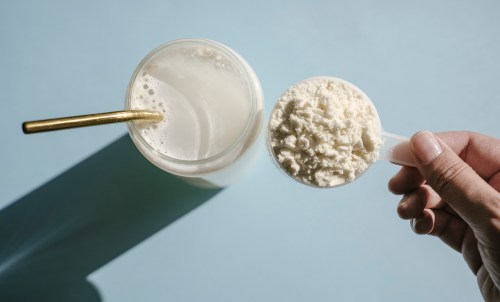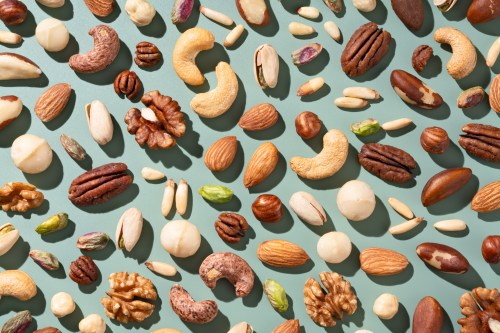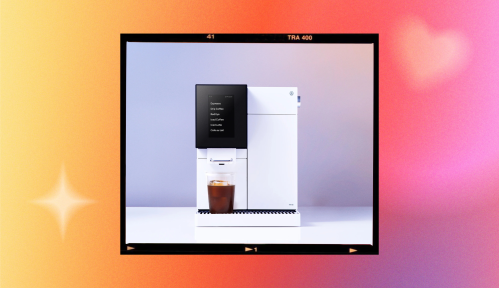Quinoa is one of those ingredients that healthy foodies seem to consistency keep coming back to. In addition to being a tried and true salad ingredient and grain bowl base, in the past few years, it’s started taking the form of pasta and ready-in-minutes microwave meals. It may not be as trendy as products spiked with collagen or adaptogens, but quinoa has definitely proven that it has staying power.
While quinoa has always seemingly “been around,” the reasons why aren’t talked about all that much. It’s just taken for granted that it’s a health food without really knowing why. Well, consider this your complete guide to the naturally gluten-free seed (yes, it’s a seed!).
What are the health benefits of quinoa?
1. It’s a complete protein source. This means that quinoa offers up all nine essential amino acids your body needs to function properly. This is pretty rare for a plant-based protein source; most complete proteins come from animal sources like chicken and beef. Plus, it has lots of protein at eight grams per one-cup serving.
2. It’s good for digestive health. Why? Because quinoa is packed with fiber—five grams per cup, or roughly 20 percent of what you should be eating every day. Fiber, of course, helps keep food moving through your digestive tract and certain forms of fiber, called prebiotics, feed the good bacteria in your gut.
3. It’s high in folate. Registered dietitian and 80 Twenty Nutrition founder Christy Brissette, RD, points out that quinoa is a good source of folate, with 78 μgs in one cup. “Folate is a B vitamin that is needed to make DNA,” she says. This vitamin is crucial during pregnancy too since it supports healthy fetal development.
4. Quinoa supports bone health, too. Quinoa also contains calcium (31 grams), phosphorus (281 grams), and magnesium (118 grams). According to Brissette, both magnesium and phosphorus are linked to playing a key role in bone health (along with superstar calcium, of course) and helping the body make protein.
5. It’s a vegan source of iron. Iron is somewhat harder to come by in plant-based sources, but quinoa offers up around 3 grams per serving (about 17 percent of your recommended daily intake). “Iron is a key part of hemoglobin, a protein that carries oxygen around your body. It helps prevent iron-deficiency anemia which could leave you feeling burnt out. Iron is key for healthy muscles, cell functioning and for creating certain hormones,” Brissette explains, adding that copper works with iron to form red blood cells.
While quinoa’s nutrition stats are pretty impressive, Brissette says it’s still best to round out your quinoa with some other protein and fiber sources. “I encourage my clients to aim for eight to 10 grams of fiber at each meal to help get them to their daily goal,” she says. “Adding half a cup of beans, peas, or lentils to your quinoa will get you there.” She also suggests packing in some fiber-rich veggies, such as broccoli or Brussels sprouts, to round things out.
On the protein front, Brissette recommends adding eggs, chicken, or fish to make it more of a complete meal. “At a meal, you want to get about 20 to 30 grams of protein. One cup of quinoa has about eight grams, which works better as a snack than a meal,” she says.
Tips for buying and making quinoa
Even though quinoa is naturally gluten-free, if you have an allergy or sensitivity to gluten, it’s important to double-check the label. One study published in the American Journal of Clinical Nutrition found that some quinoa at the grocery store had detectable traces of gluten.
If you’re buying raw quinoa that hasn’t been pre-washed, give it a gentle rinse at home before cooking. Quinoa is naturally coated in saponin, which works as a pesticide. While there aren’t any known risk factors, it can alter the taste, leaving a slight bitterness. Rinse it off and you should be good to go.
Cooking quinoa is thankfully pretty simple. All you do is add it to a pot of boiled water (the most common ratio for cooking quinoa is one cup of the seed per two cups of water, but check the directions on the specific product you bought for specific guidance). Then, just cover it and let it cook for ten to 15 minutes on low heat. The quinoa should be fluffy like rice, not crunchy.
Now that you know how to make it, enjoy your quinoa in one of the recipes below:
3 ways to enjoy quinoa

1. Chewy blueberry millet quinoa snack bars
Quinoa is most often incorporated into salads and grain bowls, but you can work the seed right into a snack bar. The treats work as a yummy afternoon treat or a post-workout snack.

2. Vegetarian quinoa black bean burgers
Another unexpected way to cook with quinoa is by pairing it with black beans to make veggie patties. Both ingredients are good sources of protein and fiber and combining them varies the texture and taste than just using one on its own.

3. Maple cinnamon breakfast quinoa bowl
You can even have quinoa for breakfast by subbing it in for oats. The slightly nutty flavor pairs well with warming taste notes, like the maple and cinnamon used in this recipe. Top it off with your favorite fruit to add some extra sweetness to your bowl.
While you’re stocking up on healthy staples, consider adding these healthy must-haves to your pantry, including four favorites from foodie Alison Wu.
Sign Up for Our Daily Newsletter
Get all the latest in wellness, trends, food, fitness, beauty, and more delivered right to your inbox.
Got it, you've been added to our email list.











